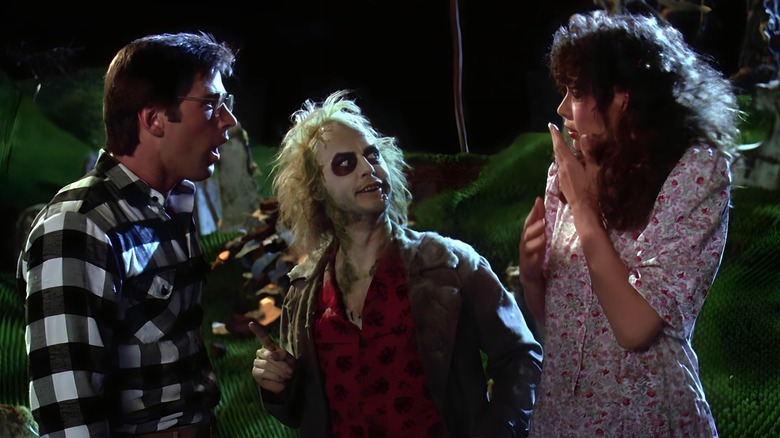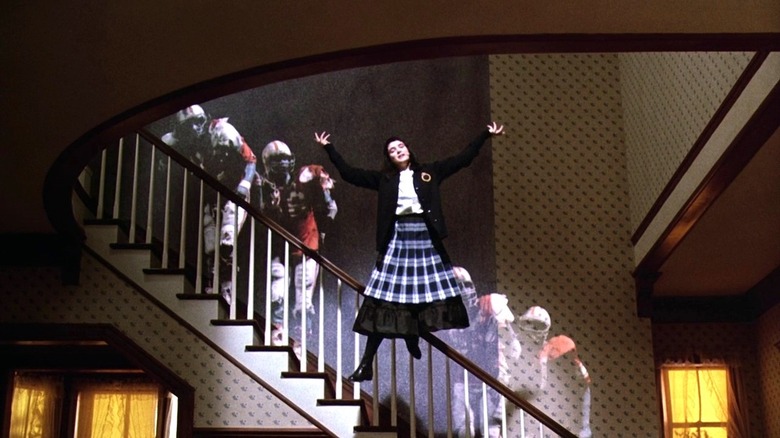Was The Original Beetlejuice Script Really Too Disturbing For Hollywood?
Betelgeuse (Michael Keaton) is the ghost with the most who has been making people laugh and cringe since first appearing in 1988's "Beetlejuice." The film follows Adam (Alec Baldwin) and Barbara Maitland (Geena Davis), new ghosts who ask Beetlejuice to get rid of the family that bought their home. But things don't go as planned, leading to many memorable moments, including Lydia's high-flying dance sequence. But "Beetlejuice" originally had a much darker tone.
The beginning of the film shows Barbara and Adam crashing into the side of a covered bridge while trying to protect a dog who is now holding their car up by a single board. After a moment of suspense, the car plunges into the water. According to Tor.com, the film's original script depicted a much more gruesome death for the couple, including the addition of a piling that crushes Barbara's arm. The agonizing scene is included in the June 1985 draft of the script.
That same draft includes a character that was later written out: Lydia's (Winona Ryder) younger sister Cathy, who is later torn apart by a squirrel version of Betelgeuse, a winged demon with a focus on murder. He is also a predator called Danny Death who attacks Lydia upon visiting the Deetz home.
And the original ending is nowhere near that of the happy-go-lucky dance number that is now synonymous with the film. And the music originally chosen for the film would have given the story a different tempo as well.
The suggestions that gave audiences that iconic happy ending
There are many favorite moments that fans may anticipate when rewatching "Beetlejuice." For some, it may be the dinner party possession. For others, it's the happy ending that showcases "Jump in Line (Shake Señora)" by Harry Belafonte. In the theatrical version, Lydia Deetz returns home to tell her parents, Barbara, and Adam that she aced her math test. The entire house -– including the chairs -– erupts in excitement, with Lydia soaring into the air. She shows off her dance moves while a group of newly dead football players acts as her backup dancers. It's a now-iconic moment in cinema, but it only came around after a few discussions concerning the original ending that would have only made audiences cry.
Co-writers Michael McDowell and Larry Wilson told Yahoo! Entertainment that they originally planned for Lydia to die in a fire so that she could join Barbara and Adam. "A couple of people said to us, 'Do you really think that's a good idea? Is that really the message you want to be sending to the teenagers of the world?...'" said Wilson. The February 1987 draft finds Lydia alive and levitating at the end, but she's singing the ballad "When a Man Loves a Woman" by Percy Sledge. Jeffrey Jones, who played Lydia's father, Charles, told Pitchfork that Catherine O'Hara, who portrayed his wife, Delia, suggested that the film swap out the R&B tracks for calypso, picking up the tempo and giving audiences plenty of toe-tapping moments.

